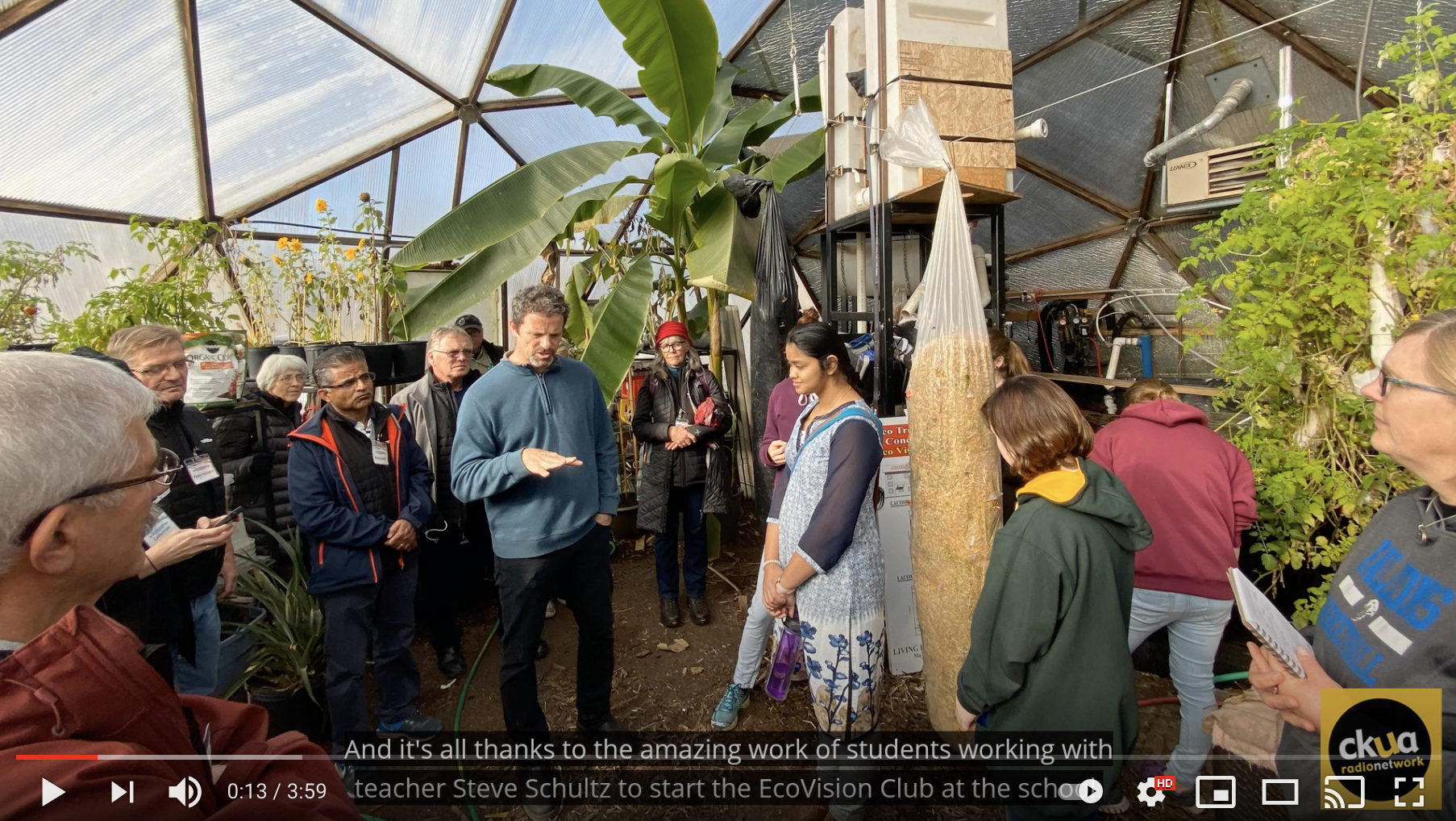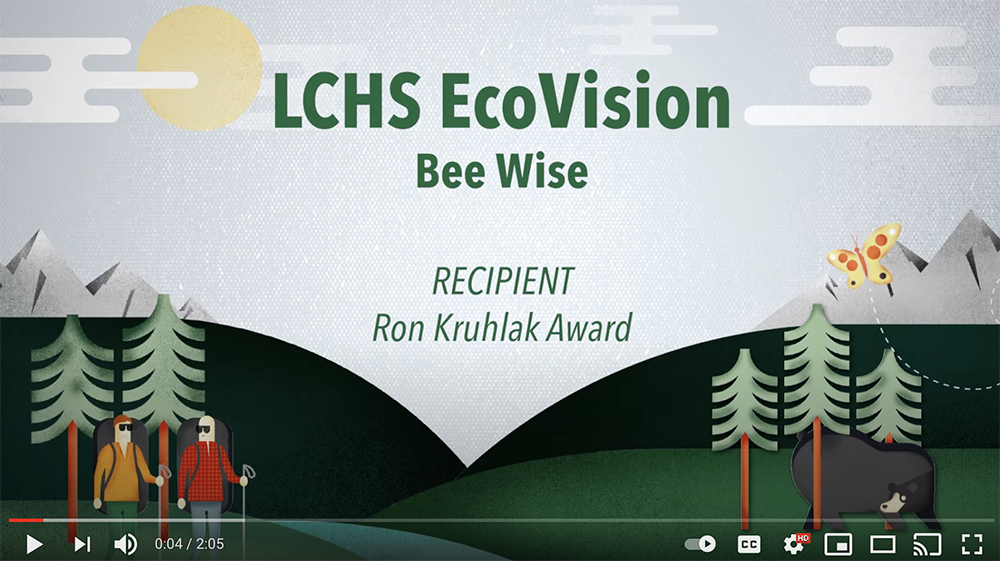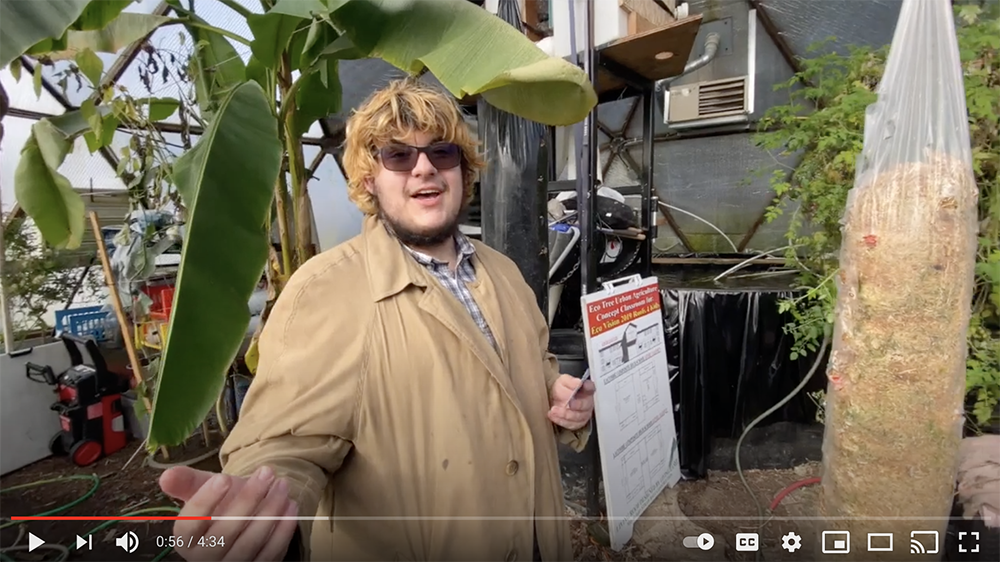![]()
Lacombe Composite High School (LCHS) in Alberta has a remarkable EcoVision Club that is inspiring and empowering students to become ecological leaders. The club runs student-led projects that are working to improve the quality of the air, land and water and that demonstrate a really strong model of farm to school in action.
All of the club’s projects focus on three pillars: (1) the environment, (2) education, and (3) the community.
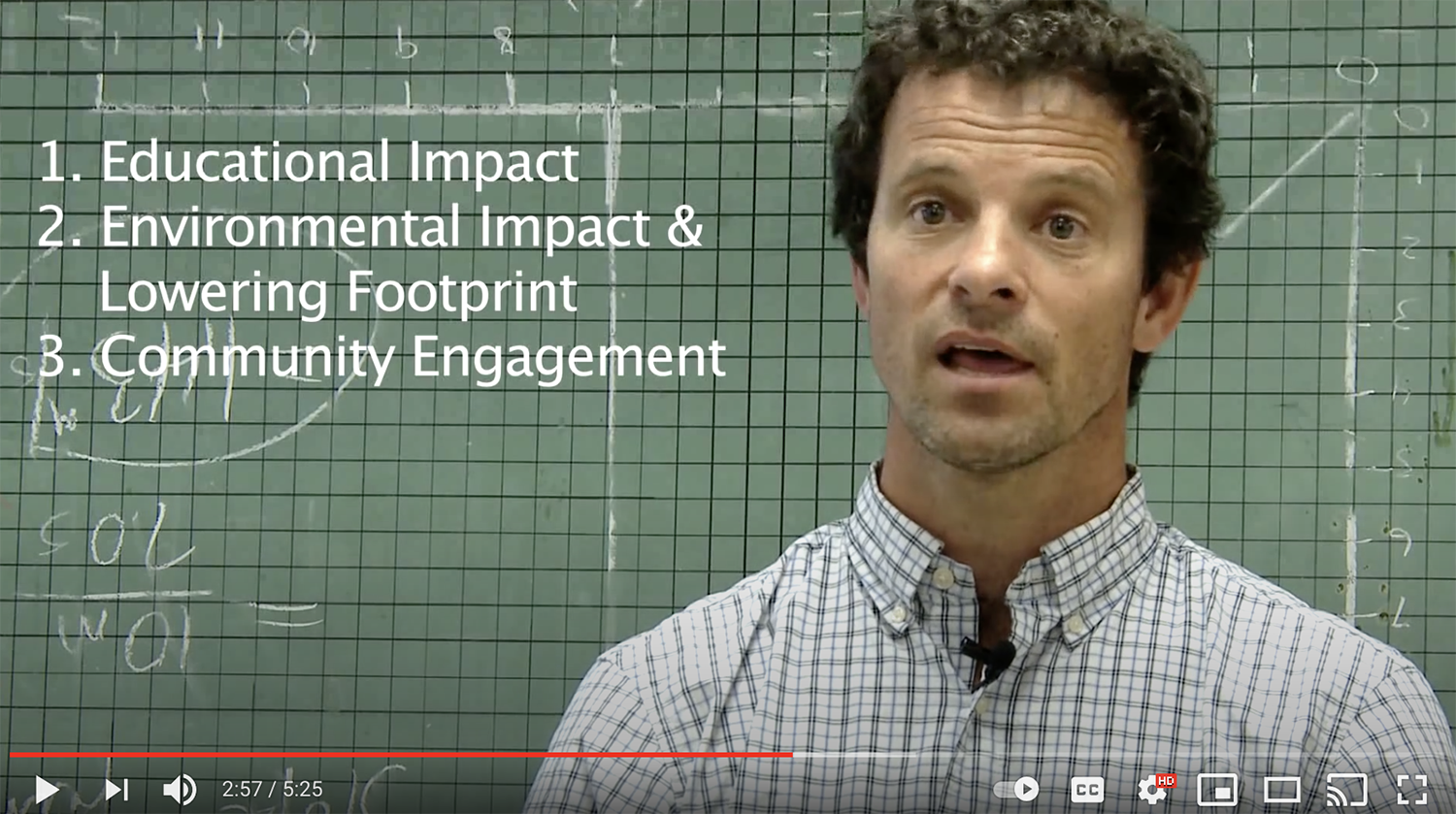 So what sorts of projects does EcoVision work on? Their five goals give a summary:
So what sorts of projects does EcoVision work on? Their five goals give a summary:
- Develop an outdoor classroom, garden and edible forest
- Maintain our composting, solar, recycling & greenhouse projects
- Enhance our community greenhouse and permaculture area
- Promote awareness and educate individuals about our projects and environmental issues
- Partner with the community and other school groups to encourage environmental actions such as recycling, gardening, & beautification
At the heart of EcoVision’s mandate is student leadership and involvement. Students are a part of the club’s projects every step of the way. From the birth of a project to its finish, it’s all run by students. They are doing everything from helping to build garden beds and grow food, to research, running their website, accounting, and grant writing.
Since 2006, the club has installed a solar system on the school’s roof, built and maintained compost systems, set up a beekeeping program, built a geothermal greenhouse, and added an aquaponics system to the greenhouse. The students also oversee recycling programs, run awareness campaigns like garbage-free February, and lead ongoing activities such as growing plants (for their cafeteria or for fundraising), giving tours of their facilities, and developing communications materials.
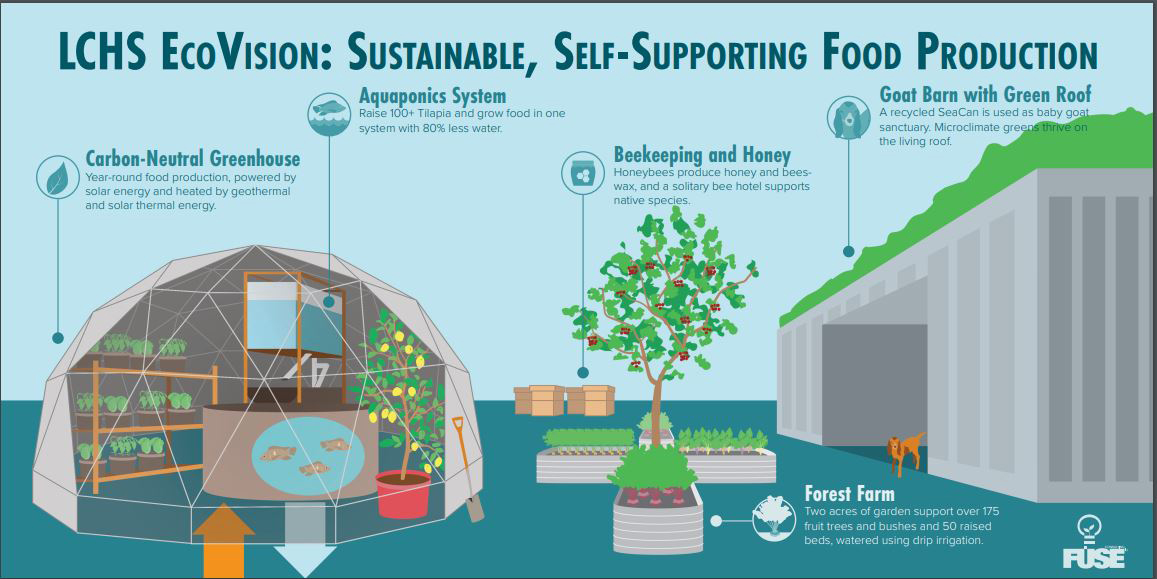
One of the club’s largest projects was the building of a new state-of-the-art greenhouse in 2012, which came about thanks to collaboration with a number of community partners. The club’s goal is to grow all of the produce they need for their cafeteria and to share any leftovers with the community.
Through their hands-on learning projects, EcoVision students are graduating high school with invaluable life skills and direct project experience, combined with a deep understanding of the circular nature of our environments. They also know how to grow their own food!
The club is run by teacher Steve Schultz, EcoVision Advisor. Steve has previously been selected as Lacombe Citizen of the Year, and has received a Prime Minister’s Excellence in Teaching Award. You can hear his passion for environmental learning, as well as the students’, in a series of videos on the club’s website. Their website also provides a list of environmental resources, gardening resources, and grants!


